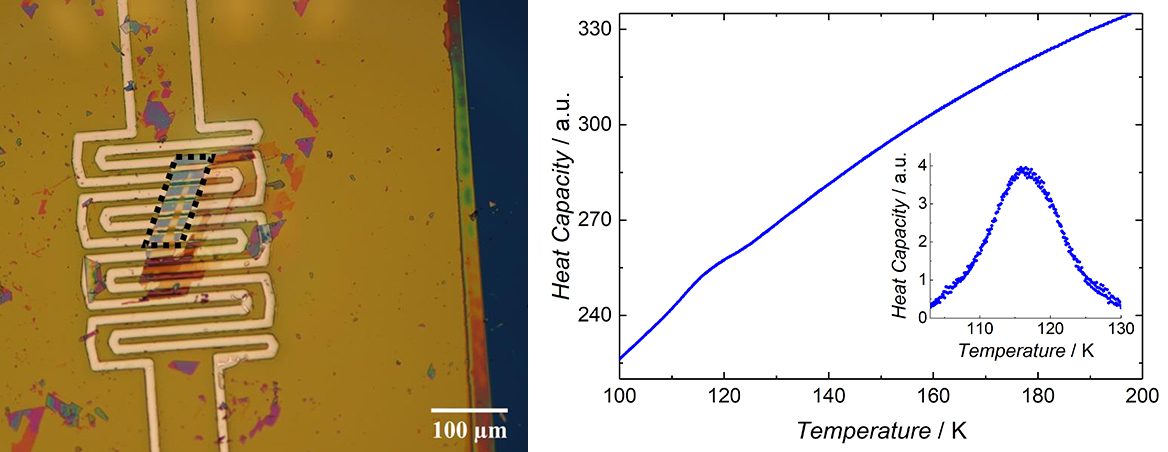Calorimetry goes nano
Thermodynamic measurements give a great deal of information on fundamental properties, providing direct and quantifiable insight into, e.g., densities of state and phase transitions. Many interesting materials are obtained in the form of sub-microgram single-crystals, thin films or even grafted monolayers. The mass of these samples is extremely small and so is their heat capacity. Therefore, this makes conventional calorimeters unsuitable.
Using micromachining technology, we fabricate and develop different types of membrane-based nanocalorimeters. They can be operated in either modulation (AC) calorimetry or relaxation calorimetry, over a broad range of temperatures and applied magnetic fields. We employ our devices for challenging studies on magnetic systems, including spin-crossover compounds and molecules for applications in quantum information and magnetic refrigeration on a chip.

Top: Photograph of a calorimeter based on a Si (left) or Si3N4 (right) membrane with a ca. 100 nanogram single-crystal of [FexM1-x(btr)2(NCS)2]·H2O (highlighted by the arrow). Sample is a courtesy of Kamel Boukheddaden.
Top left: Temperature response of the calorimeter to a heat pulse. Blue line is the fit to an exponential relaxation. Top right: Experimental zero-field heat capacity. Data are collected with a homemade calorimeter, based on a Si3N4 membrane, for a ca. 100 nanogram single-crystal of [FexM1-x(btr)2(NCS)2]·H2O. Sample is a courtesy of Kamel Boukheddaden.

Top left: Photograph of a calorimeter based on a Si3N4 membrane with a ca. 5 nanogram single-crystal flake of FePS3 (highlighted by dotted lines). Top right: Its experimental zero-field AC heat capacity that shows antiferromagnetic ordering (see the peak heat capacity in the inset). Sample is a courtesy of Samuel Mañas.
The team
Giulia Lorusso, Juan José Morales, Michel Castro, and Marco Evangelisti.
